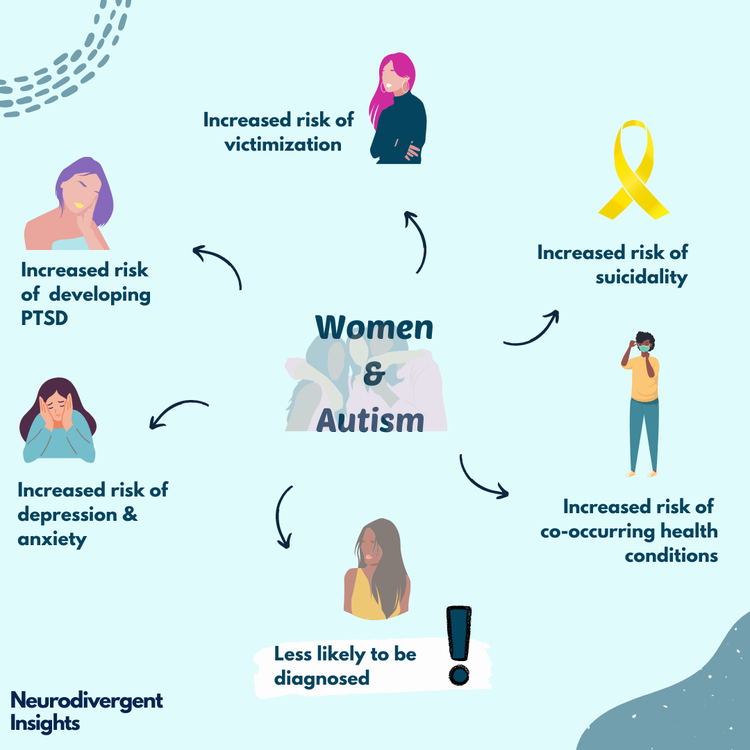Dealing With Common Misconceptions: What You Ought To Know About Autism Today
Dealing With Common Misconceptions: What You Ought To Know About Autism Today
Blog Article
Supporting People With Autism: Finest Practices in Education and Inclusion
The support of people with autism within academic settings demands a nuanced understanding of finest techniques that promote incorporation and reliable discovering. Stressing organized settings, customized training strategies, and joint efforts among families and instructors can significantly enhance the academic experience for trainees on the spectrum. The difficulty lies not just in carrying out these practices yet likewise in promoting a society of acceptance and understanding amongst peers. Discovering the details of these approaches discloses essential elements that can change educational landscapes and enhance end results for all trainees. What are the vital aspects that make these strategies successful?
Comprehending Autism Range Disorder
Autism Range Disorder (ASD) is a complex neurodevelopmental problem characterized by a range of difficulties in social interaction, interaction, and habits. autism. People with ASD might display a selection of signs and symptoms and features, commonly resulting in a distinct account of strengths and problems. The range nature of the problem indicates that symptoms can vary considerably in intensity, with some individuals needing substantial assistance while others may work separately
ASD usually shows up in early youth, with signs commonly visible by the age of 2 or three. Common attributes consist of troubles in comprehending social signs, obstacles in taking part in reciprocatory conversations, and a preference for regimens or repetitive actions. Sensory level of sensitivities are additionally prevalent, impacting exactly how people procedure and react to sensory input from their environment.
Recognizing these characteristics is necessary for cultivating efficient assistance strategies. Exact acknowledgment of ASD signs can cause timely treatments that can dramatically improve an individual's lifestyle. Acknowledging the diverse ways in which the problem shows up helps specialists, caretakers, and educators tailor their approaches to fulfill the special requirements of each individual on the autism spectrum.
Creating Inclusive Learning Settings
Creating a comprehensive learning setting is important for sustaining individuals with Autism Range Condition and promoting their academic and social success. Such atmospheres focus on approval, understanding, and partnership amongst all students, fostering a feeling of belonging. This method needs the active involvement of parents, peers, and instructors, producing a community that values variety and inclusivity.
To achieve inclusivity, physical class setups must accommodate numerous sensory needs, providing quiet areas and versatile seating alternatives. Visual assistances, such as schedules and sign cards, can help understanding and predictability, necessary for lots of trainees with autism. Moreover, applying organized routines and clear assumptions helps in reducing anxiety and improves discovering opportunities.
Collaboration among personnel is crucial. Educators should participate in ongoing expert development to much better recognize autism and its implications for learning. Developing partnerships with specialized specialists, such as speech therapists and physical therapists, can better enhance the support supplied to trainees.
Eventually, cultivating an inclusive knowing setting not just benefits students with autism yet improves the educational experience for all students, promoting compassion, regard, and a much deeper understanding of private differences. This cumulative initiative is crucial for cultivating a encouraging and appealing academic atmosphere.
Reliable Instructing Techniques
To successfully sustain people with Autism Spectrum Condition in the class, instructors have to employ a variety of training approaches that accommodate the special discovering styles and requirements of these students. One effective technique is making use of visual aids, such as pictures, representations, and charts, which can boost comprehension index and retention of details. These tools help clarify complex concepts and supply a referral point for trainees.
In addition, implementing clear expectations and structured routines can develop a feeling of stability and predictability, which is crucial for many people with autism. It is additionally helpful to integrate hands-on learning opportunities, as these experiences can foster engagement and practical application of abilities.
Distinguished instruction needs to be a cornerstone of teaching strategies, permitting teachers to customize lessons to individual staminas and difficulties. Moreover, using social tales can aid in developing social skills and understanding social hints, bridging interaction spaces.
Finally, regular responses and favorable support can strengthen and encourage pupils preferred behaviors. By integrating these techniques, educators can produce a inclusive and efficient learning setting that sustains the development and growth of students with Autism Spectrum Problem.
Teaming Up With Neighborhoods and family members
Efficient partnership with family members and neighborhoods plays an important function in sustaining individuals with Autism Spectrum Problem. Establishing solid partnerships between teachers, families, and community organizations enhances the effectiveness of academic treatments and promotes an inclusive atmosphere. Family members, as key caregivers, provide important insights right into the unique requirements and choices of their children. Engaging them in the decision-making process ensures that academic techniques are customized to private staminas and obstacles.
Schools need to assist in open interaction networks, such as regular conferences, workshops, and responses sessions, to cultivate a sense of neighborhood and depend on. Furthermore, including area organizations can supply accessibility to resources and assistance solutions that extend past the classroom, enhancing social chances and skill development for individuals with autism.
Expert growth for teachers must also emphasize the significance of family members interaction and neighborhood cooperation. Training on culturally receptive Discover More practices can assist teachers better comprehend and integrate diverse family viewpoints. Ultimately, a collective strategy not only empowers family members but also enhances the discovering experiences of people with autism, creating a supportive ecosystem that advertises their total well-being and success.
Encouraging Social Skills and Interaction
Promoting social skills and interaction is crucial for people with Autism Range Condition, as these abilities are fundamental for constructing relationships and navigating social contexts. Efficient techniques for boosting social competencies include structured social abilities training, peer-mediated treatments, and using social tales.
Social skills training programs can be tailored to address certain deficits such as starting discussions, understanding non-verbal hints, and taking turns throughout communications. These programs commonly include role-playing scenarios to offer sensible experience and comments. In addition, peer-mediated treatments, where usually establishing peers are involved, can assist in naturalistic social interactions, promoting an encouraging environment for people with autism.

Moreover, developing comprehensive atmospheres in schools and neighborhood settings urges possibilities for social engagement - autism. By advertising understanding and approval amongst peers, the possibility for purposeful interactions rises, ultimately causing higher social proficiency and emotional health for people with autism

Verdict
To conclude, implementing best techniques for supporting individuals with autism in instructional setups is important for promoting incorporation and understanding. Structured regimens, aesthetic help, and partnership among teachers, family members, and community companies improve finding out experiences and address specific demands. Advertising social skills and creating inclusive settings facilitates purposeful communications. Prioritizing acceptance and engagement within schools substantially enhances the top quality of life for trainees on the autism spectrum, eventually adding to their social and scholastic success.
The support of people with autism within instructional settings necessitates a nuanced understanding of best practices that promote incorporation and efficient discovering.Creating a comprehensive understanding environment is essential for supporting individuals with Autism Spectrum Problem and promoting their social and scholastic success.To efficiently support individuals with Autism Spectrum Disorder in the classroom, educators need to employ a range of teaching techniques that cater to the unique understanding styles and demands of these students.Efficient partnership with family members and neighborhoods plays an essential duty in sustaining people with Autism Range Condition - browse around this web-site autism. Furthermore, peer-mediated interventions, where commonly developing peers are included, can promote naturalistic social communications, promoting a supportive setting for individuals with autism
Report this page